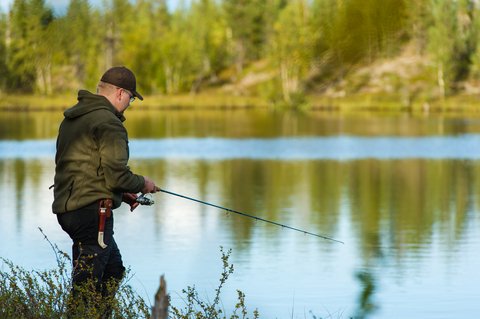Every angler has experienced it. You approach an enticing location on a lake or river and start throwing baits. Twenty minutes later you are still throwing baits, without so much as a nibble. How long should you stay before moving on to another location?
The truth is that there is no set time limit to how long you should fish a location, without success, before moving on. Much of the decision comes down to assessing a variety of factors, before you decide to abandon a location.
One of the most important factors is your experience with that location. If you have previously fished the area and had success, there is good reason to believe that you can have success again. If you have caught fish in a location before, use an extra dose of patience and thoroughly fish the area, before moving. Chances are good there are fish there; you just have to find a way to entice a bite.
But not all locations are good throughout the season. Factors such as food sources, weather, spawning activity, structure change or changes in water temperature can make fish move from a location.
Before moving, you should thoroughly assess the current conditions. Are you marking fish? Can you see baitfish activity? Are other anglers around you catching fish? Look for any clues that would lead you to believe that staying could lead to success.
Thoroughly fishing an area, before moving, means that you have exhausted all possible techniques. Try a wide variety of lures, from crankbaits to jigs. Try live bait. Fish near the bottom, watch for surface activity, look for suspended fish. When you have tried everything you can imagine, without a bite; then it is time to move to a new area.
Before completely abandoning an area in which you have caught fish in the past, it is also important to consider fish movement. Many gamefish species typically do not migrate far from a general area during the course of the season. Maybe the fish have moved to deeper water nearby, because temperatures have risen. Maybe baitfish have moved to another adjacent location and the fish have followed. Maybe changes in vegetation or other structure have lured the fish to move to different location nearby. Chances are good that you are in a productive location, you just have to adjust your target area a bit to catch fish.
If you are new to a body of water, your approach may likely be different than when you are fishing familiar water. Just because an area looks good, on the surface, does not necessarily mean it is good. If you have tried a variety of approaches, with no action, and you have no evidence the location produces fish, keep moving, trying other locations until you find fish.
There is no question that patience is a key factor when it comes to catching fish. Taking the time to thoroughly fish an attractive location, before moving, can pay off in a big way. Do not panic. Take your time. Use your knowledge and weigh all the factors, before moving on.
Photo credit: Jarini | Dreamstime.com








